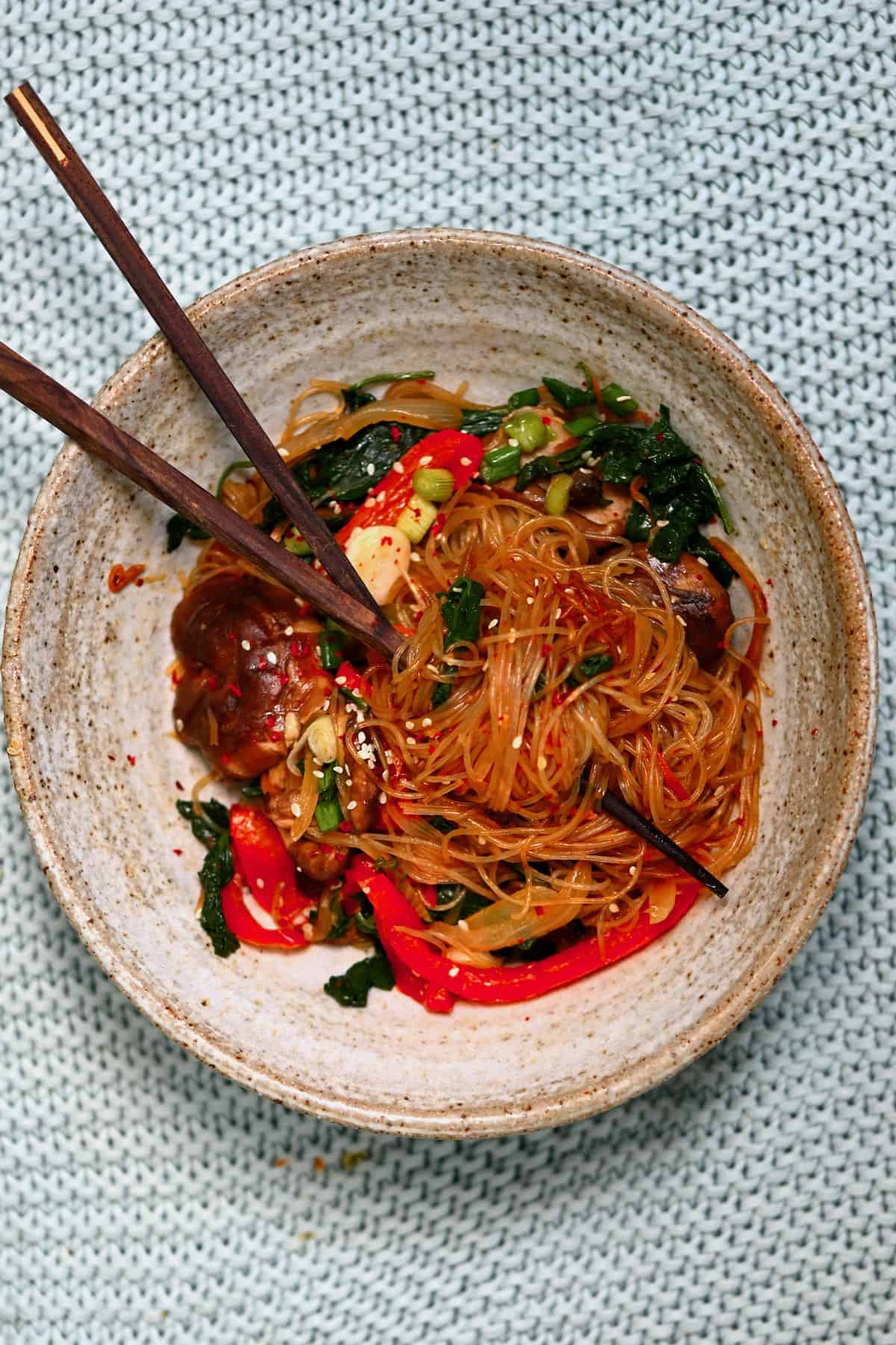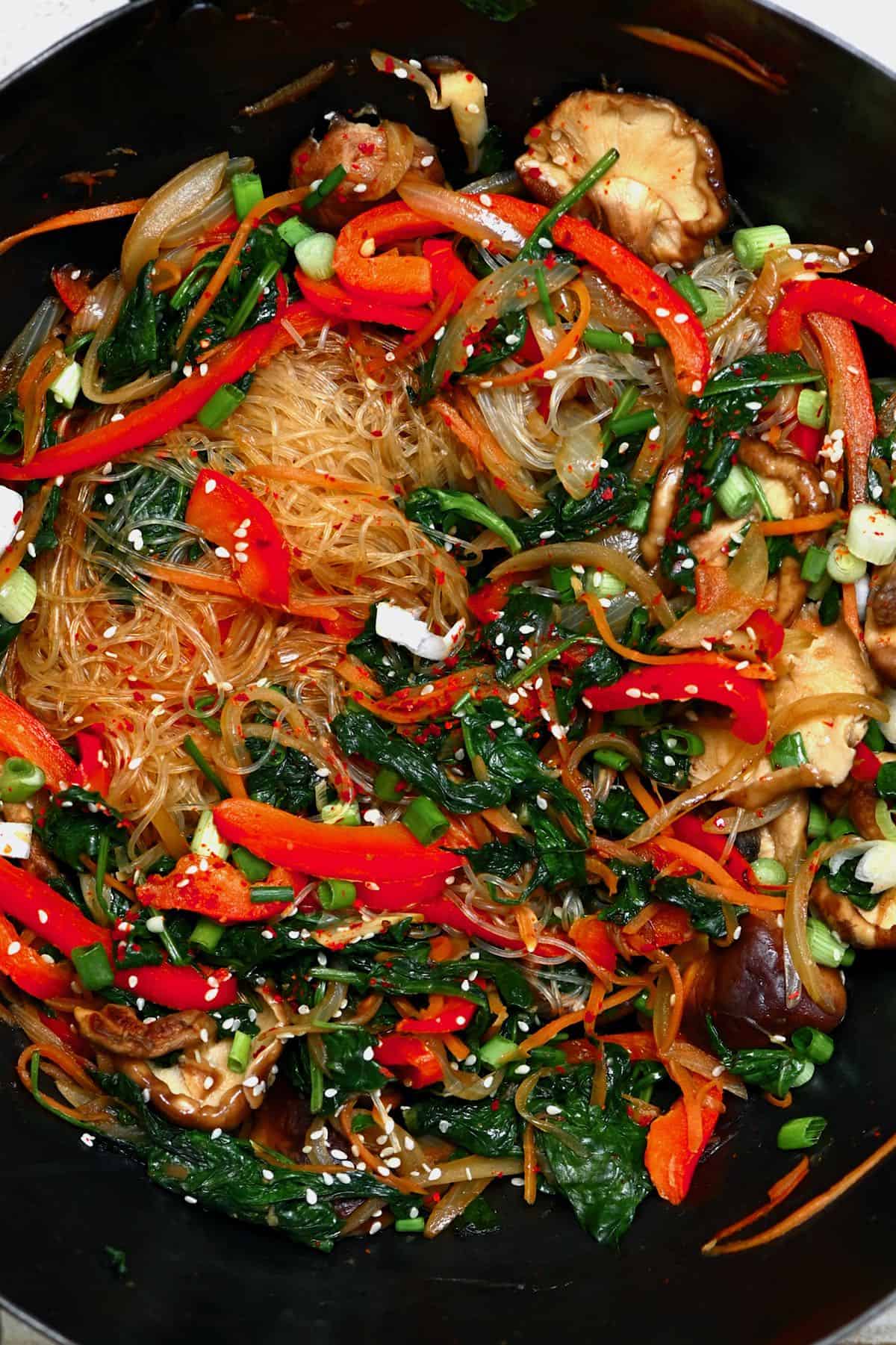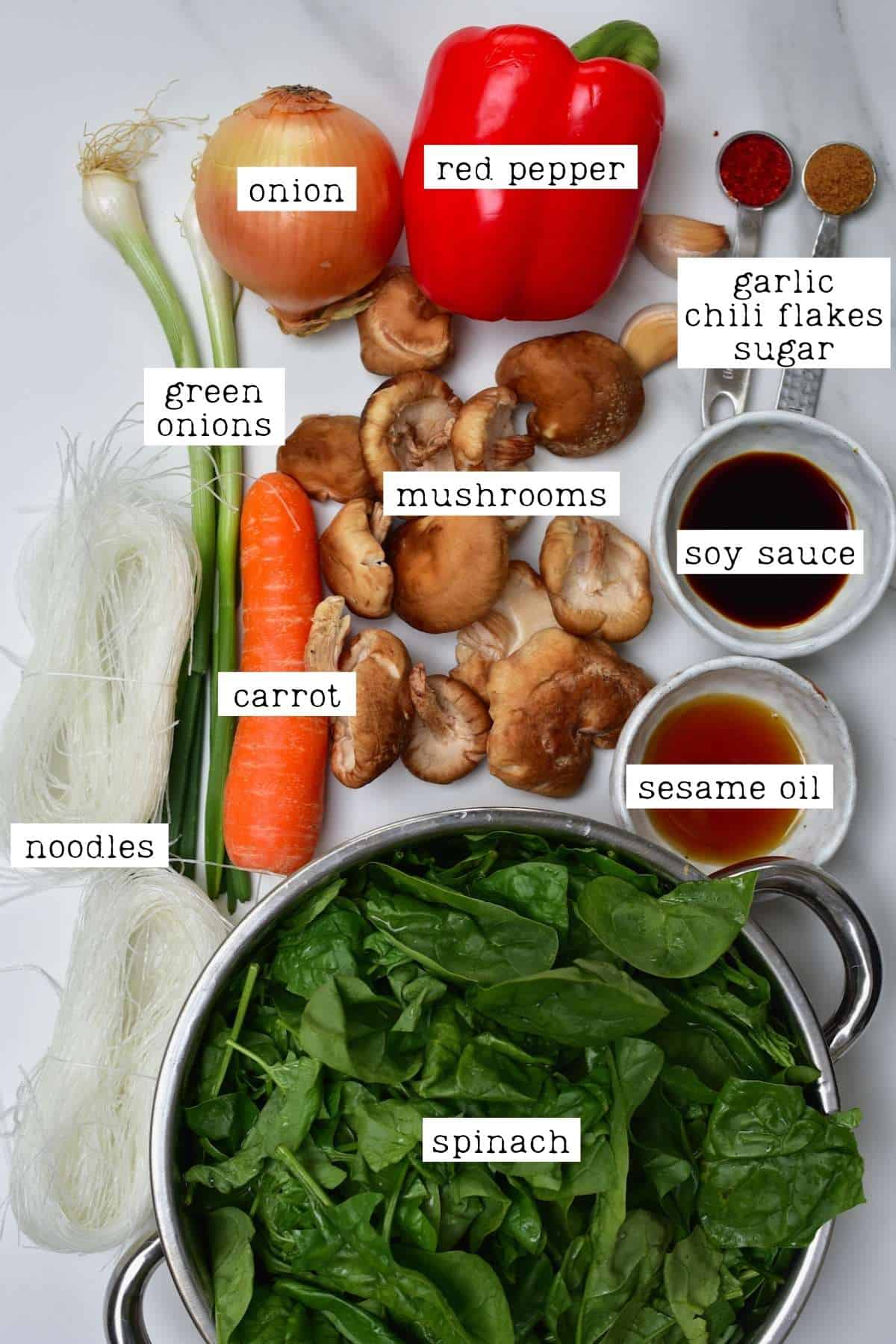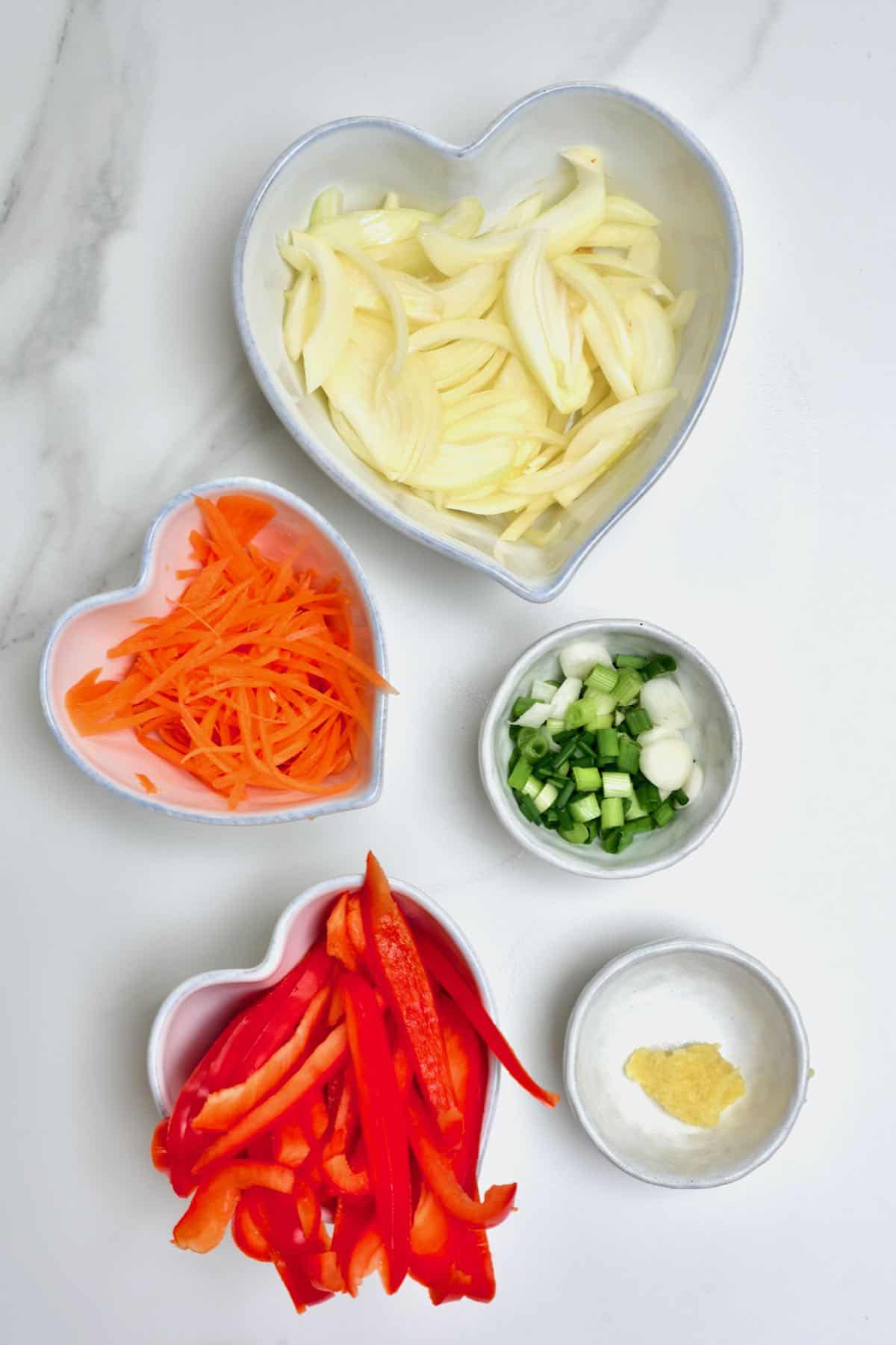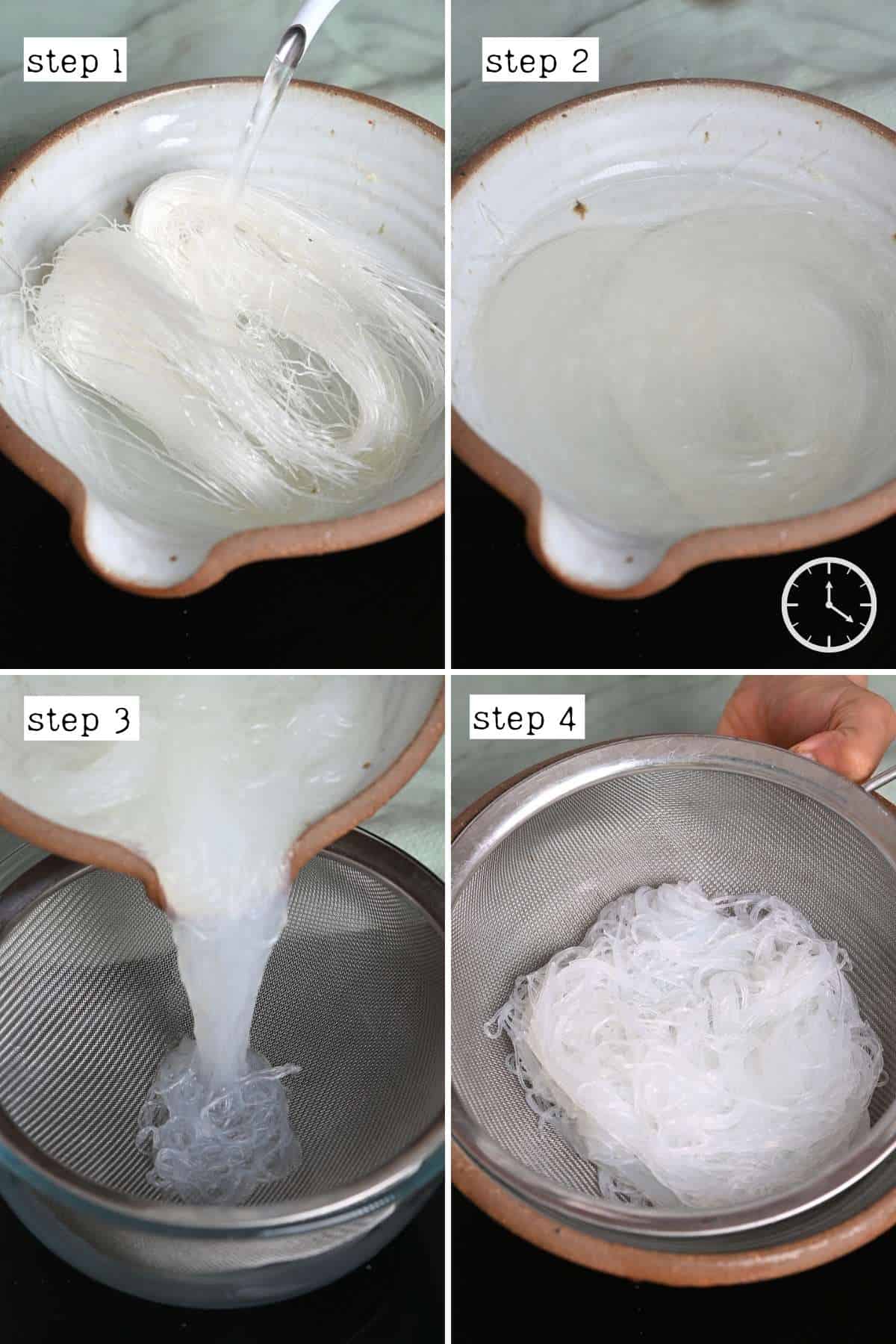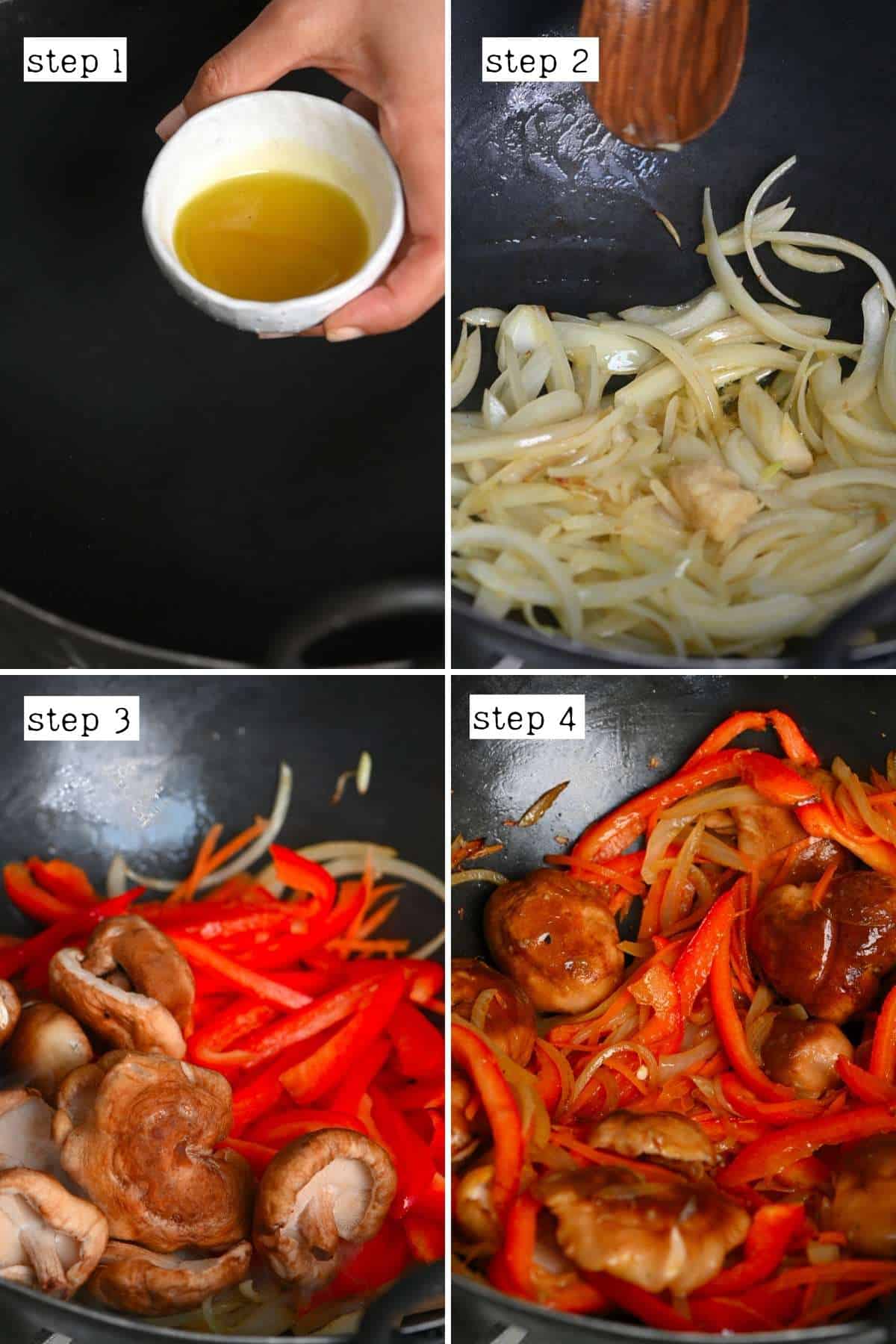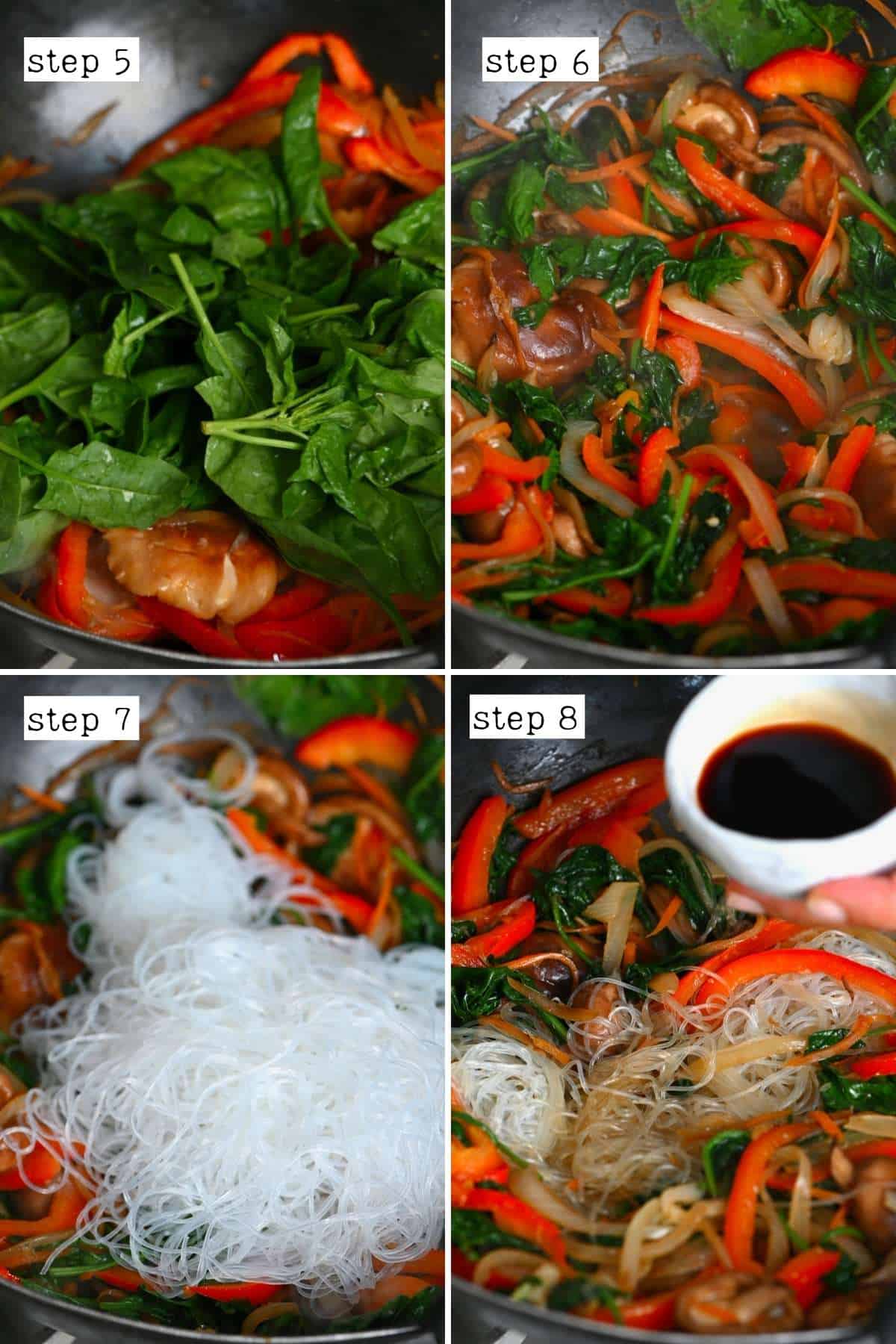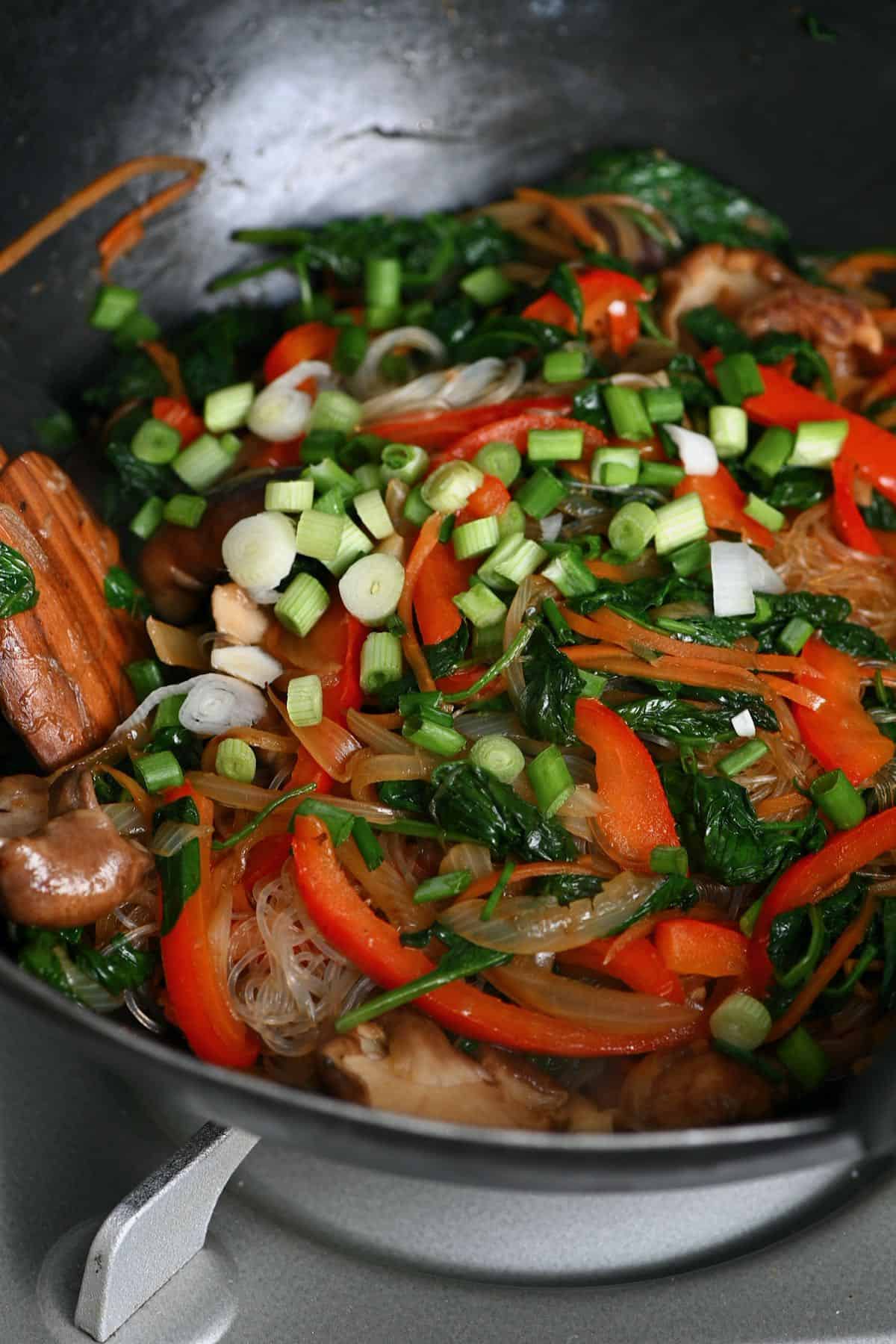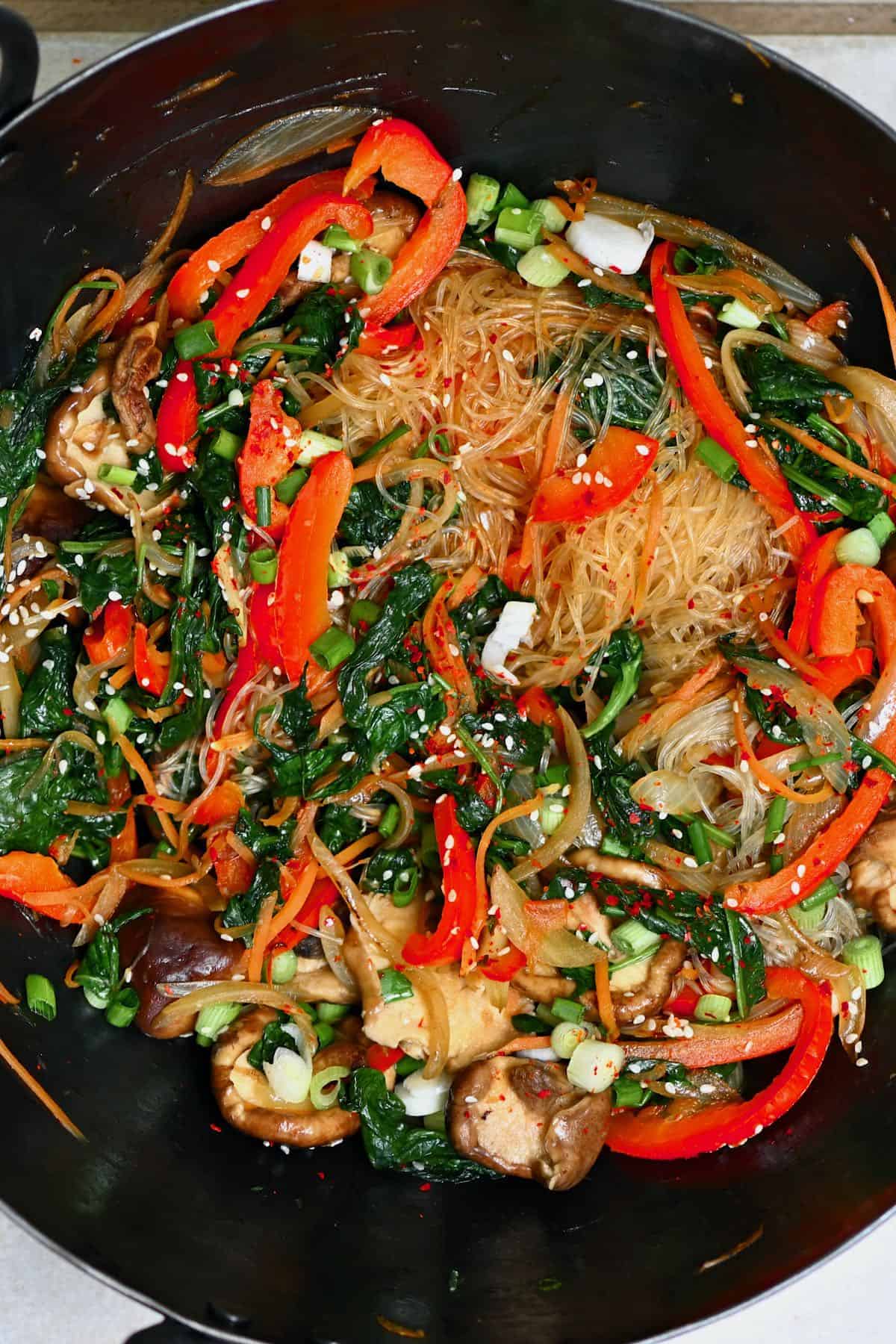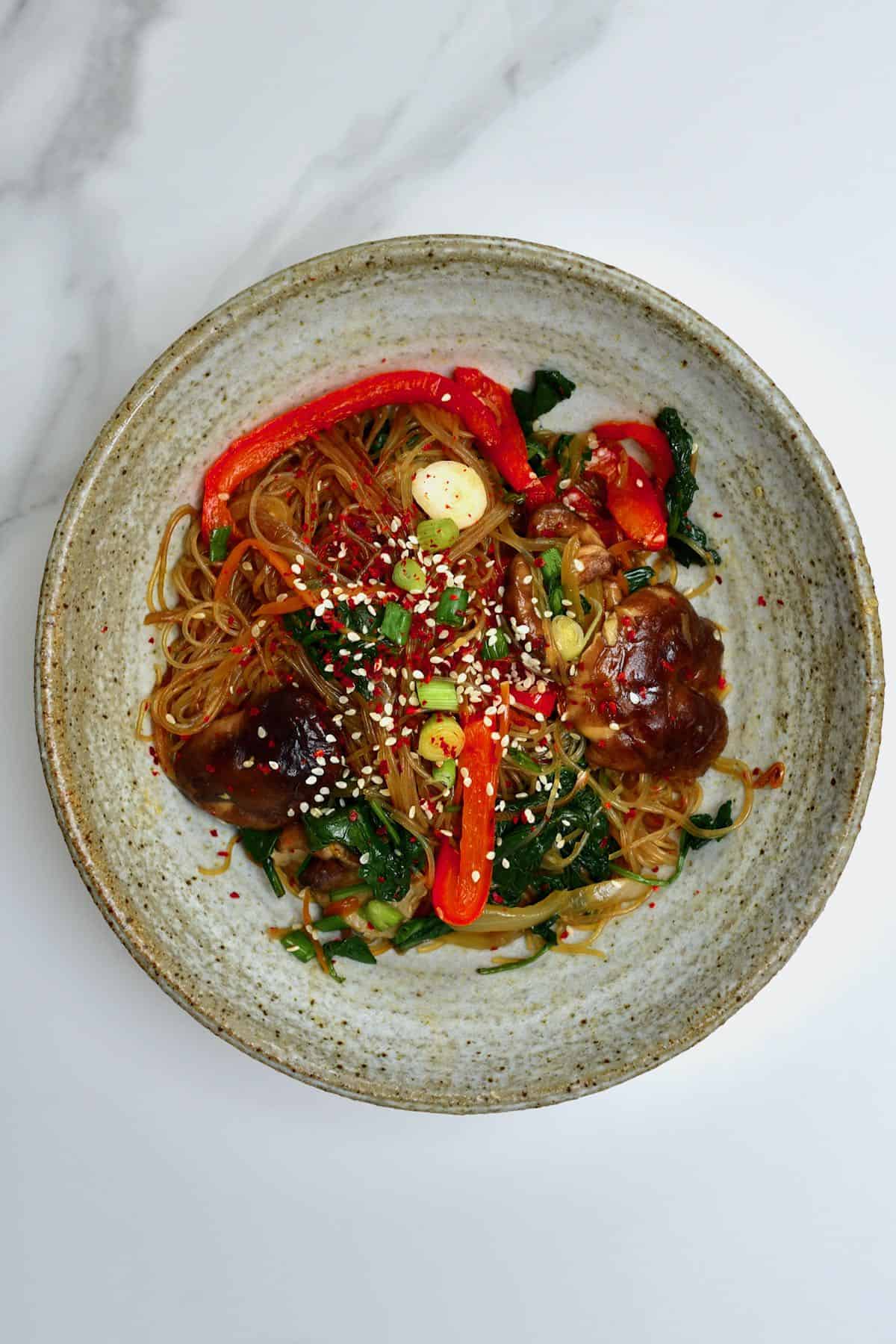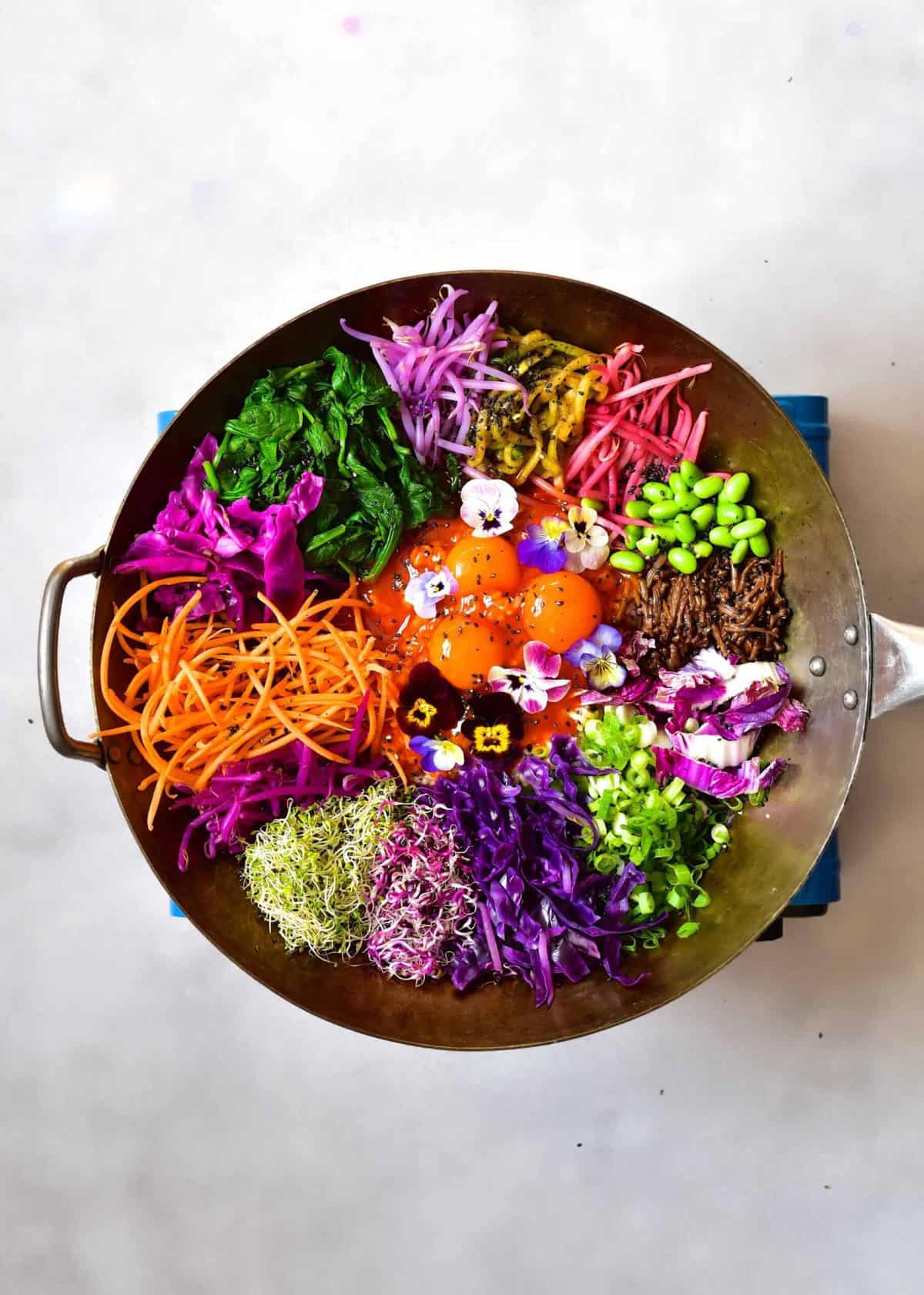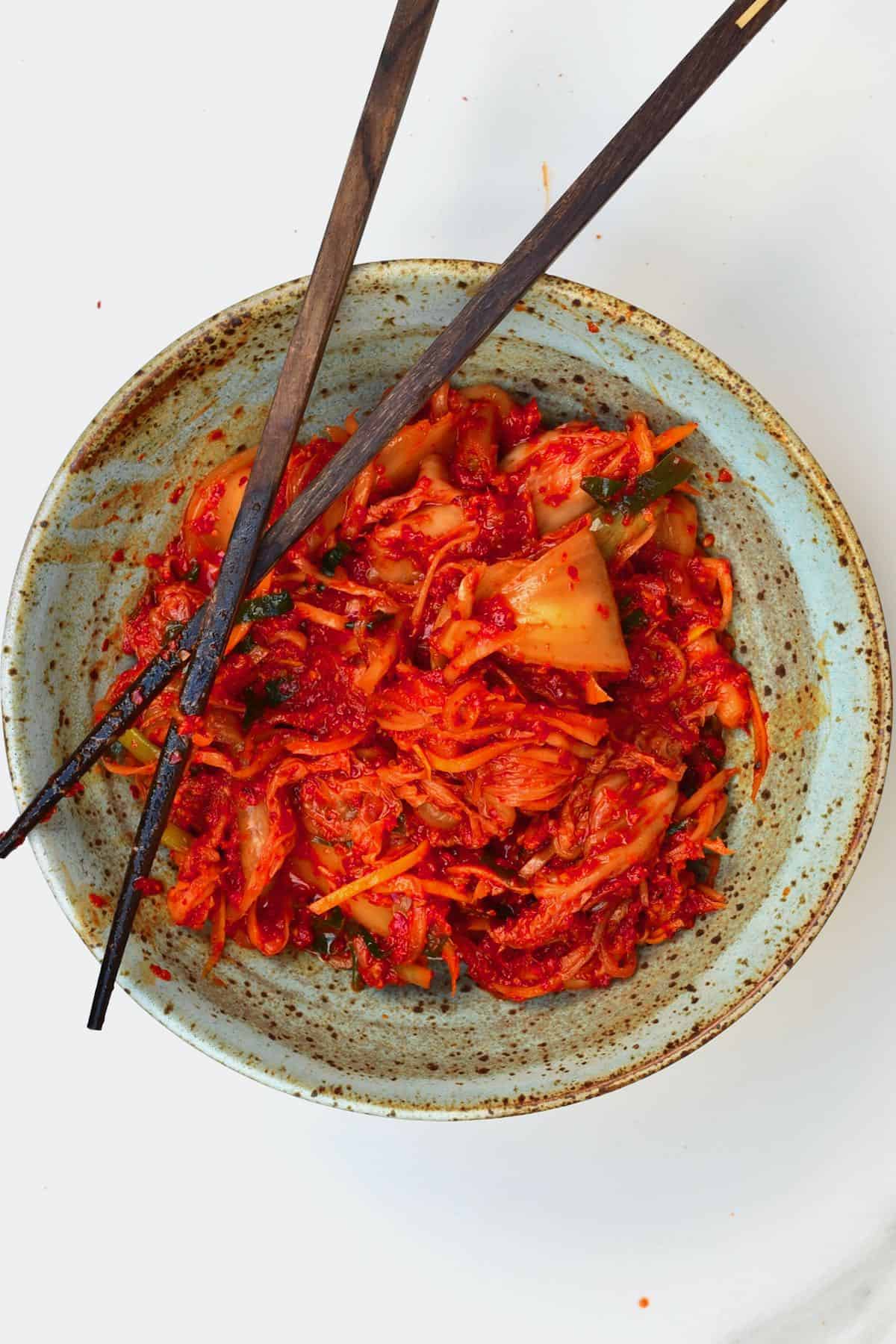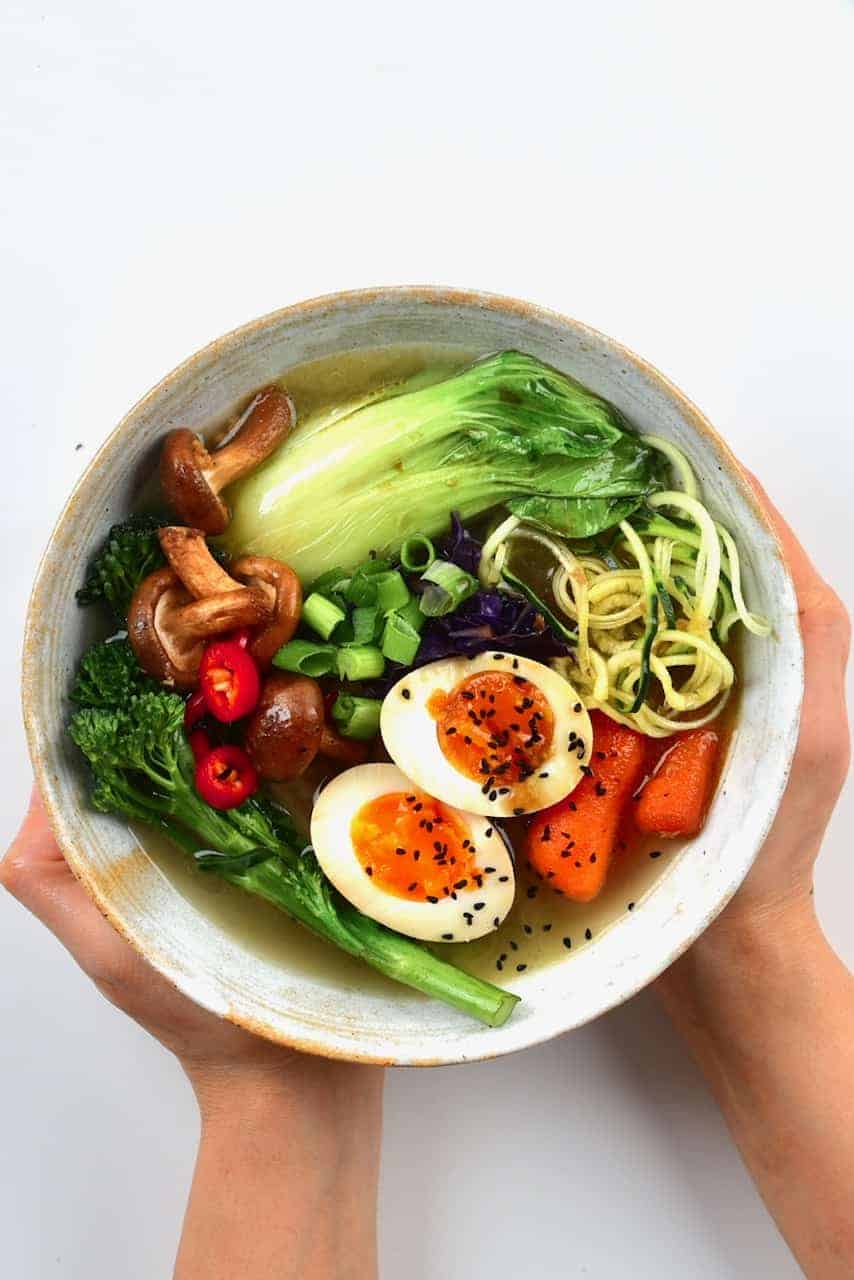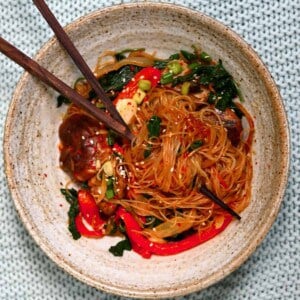Whenever I am busy with a ton of projects, I love quick and simple meal ideas like Korean vegetable pancakes (buchimgae), chili garlic noodles, kimchi fried rice, and this Japchae Korean glass noodles stir-fry (sometimes also spelled chapchae/chap chae)! This easy japchae recipe combines sweet and savory noodles with tender yet crunchy vegetables for a nutritious treat. It’s naturally vegan, too! Better yet, it contains just 12 ingredients (5 of them being simple veggies) and is ready in under 20 minutes for the ultimate simple side or main.
What is Japchae?
Japchae is a Korean stir-fry noodles dish of savory and slightly sweet, stir-fried glass noodles (usually made with “dangmyeon” – a type of cellophane noodle made from sweet potato starch) with vegetables, meat, and a soy sauce and sesame oil seasoning. It is primarily served as a side dish, though it can be eaten as a main or even served over a bed of rice. Japchae was once even a royal dish (and didn’t include noodles originally) and has long been served on special occasions. Though it is now popular for potlucks and parties, too, since it’s easy to prepare in bulk and can be enjoyed warm, at room temperature, or chilled. For this particular japchae/chapchae version, I’ve made a simple veggie japchae recipe with mixed vegetables, including mushrooms, peppers, carrots, and spinach. Serve it up as a side, light main, or even over a bed of rice (Japchae-bap) as a main.
The Veggie Japchae Ingredients
Noodles: traditionally, Dangmyeon noodles are used (made from sweet potato starch) for this Korean glass noodles recipe. I used another type of glass noodle this time as it was all I could find, so feel free to experiment a little, if needed. Vegetables: I used a simple combination of carrot, red bell pepper, shiitake mushrooms (though wood ear and oyster will also work well), spinach, and onion. Aromatics: I used a simple combination of garlic (or garlic paste) with green onions to garnish. Oil: toasted sesame oil helps to enhance and add flavor to the japchae. You need oil for the stir-frying and serving, so feel free to use a more neutral oil for the initial stir-frying. Soy sauce: it’s best to use dark soy. Feel free to use reduced-sodium soy if preferred, though, or a combination of reduced/dark soy for depth of flavor. If you’re GF, then use tamari instead. Chili flakes: feel free to adjust the amount to personal preference. Traditionally Korean chili flakes would be used (gochugaru), though you can use other chili flake varieties too. You can also use chili threads to garnish. Sugar: just a little sugar helps balance the salty, spicy flavors in the japchae recipe and gives it its signature sweet and savory taste.
Optional add-ins and variations
Vegetables: feel free to add other vegetables based on what you have in your fridge. Good options include zucchini, Bok choy, broccoli, peas, cabbage, etc. Proteins: to create more of a meal, feel free to add in some crispy tofu or the protein of your choice. Egg: you can add a fried egg as a garnish or beat the egg whites and yolk separately, then fry them up and thinly slice them before mixing them into the prepared vegetable japchae. Sesame seeds: raw or lightly toasted sesame seeds work well as a garnish.
How to Make Japchae Noodles
Step 1: Prepare the Vegetables
First, shred or julienne the carrot and thinly slice the onion and pepper. Then mince the garlic (unless you’re using garlic paste) and thinly slice the spring onion (then set aside). To finish preparing the vegetables, rinse the spinach and lightly brush the mushrooms clean.
Step 2: Prepare the Noodles
Soak the noodles in boiling water for 3 minutes before draining and rinsing them in cold water (or placing them in an ice bath). Feel free to use some kitchen scissors to slightly cut up the noodles too (before or after soaking). The time will vary based on the noodles you use. Be careful not to overcook the noodles.
Step 3: Stir Fry the Vegetables
In a large skillet, heat the cooking oil of medium-high heat, then add the sliced onion and garlic and cook for 1-2 minutes. Then add the carrot, shiitake, and red peppers and stir fry for a further 2-3 minutes. Reduce the heat to medium and add the spinach, cooking until it wilts, stirring often.
Step 4: Add the Noodles
Finally, add the noodles, soy sauce, sesame oil, sugar, and a pinch of salt, and stir to incorporate. Cook for a further minute to allow the sugar to dissolve properly. Then finally add the spring onion and gently stir to mix. The veggie japchae is ready to serve! Optionally sprinkle with some sesame seeds and chili threads.
How to Make Ahead and Store
Make ahead: vegetable japchae can be enjoyed cold, at room temperature, or warm – so preparing it the night before works fine. Fridge: allow the noodles to cool, then transfer to an airtight container and store in the refrigerator for between 2-3 days. Reheat: use a microwave or the stovetop to reheat the Korean glass noodles until warm throughout. Note that the japchae noodles will harden and generally become more opaque when cold. However, they will soften up again when reheated.
Recipe Notes & Variations
Cook the elements separately: traditionally each of the japchae ingredients is cooked separately before combining them with the noodles. This is meant to yield better overall flavor and texture. I usually add the ingredients incrementally based on their differing cooking times (to save time). However, feel free to cook the vegetables and noodles separately then mix them when serving. Using dried shiitake: make sure to soak the shiitake mushrooms for several hours before using them. You can also save the soaking liquid for broths and stocks. Be careful not to overcook the vegetables: they should still be slightly crunchy for texture and freshness. Make sure to add the vegetables in at different times according to their cooking times.
Other Healthy Asian Inspired Recipes
Rainbow vegetarian Bibimbap Napa cabbage kimchi Japanese chicken ramen Easy Garlic Chili Oil Noodles (10 Minute Meal!) Miso glazed sweet potatoes Steamed mushroom dumplings Simple Asian cucumber salad Korean Cucumber Salad Kimchi Fried Rice (Kimchi Bokkeumbap) Simple Healthy Vegetable Stir Fry with Noodles Easy Egg Fried Rice (with Vegetables | Multiple Variations)
If you try this Japchae Korean glass noodles recipe, I’d love to hear your thoughts/questions below. Also, I’d appreciate a recipe card rating below, and feel free to tag me in your recipe recreations on Instagram @Alphafoodie!






